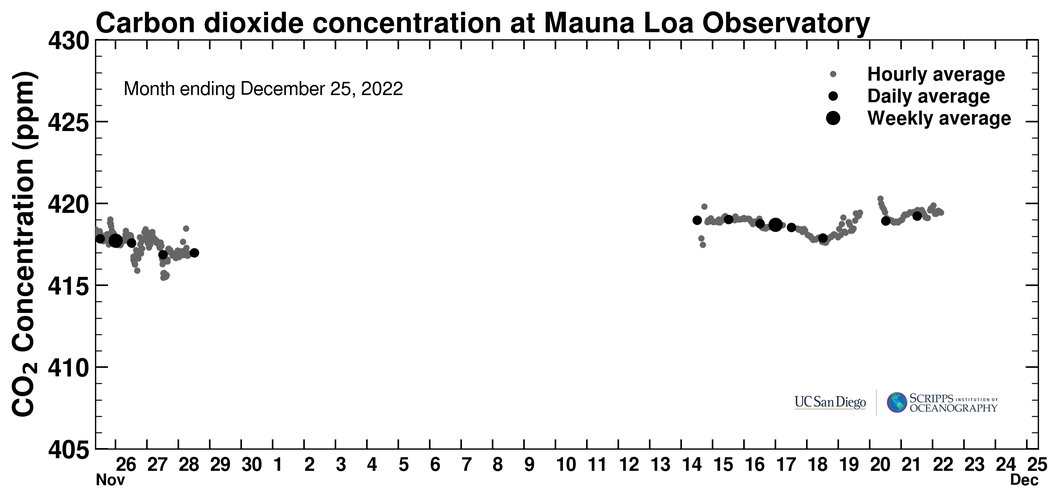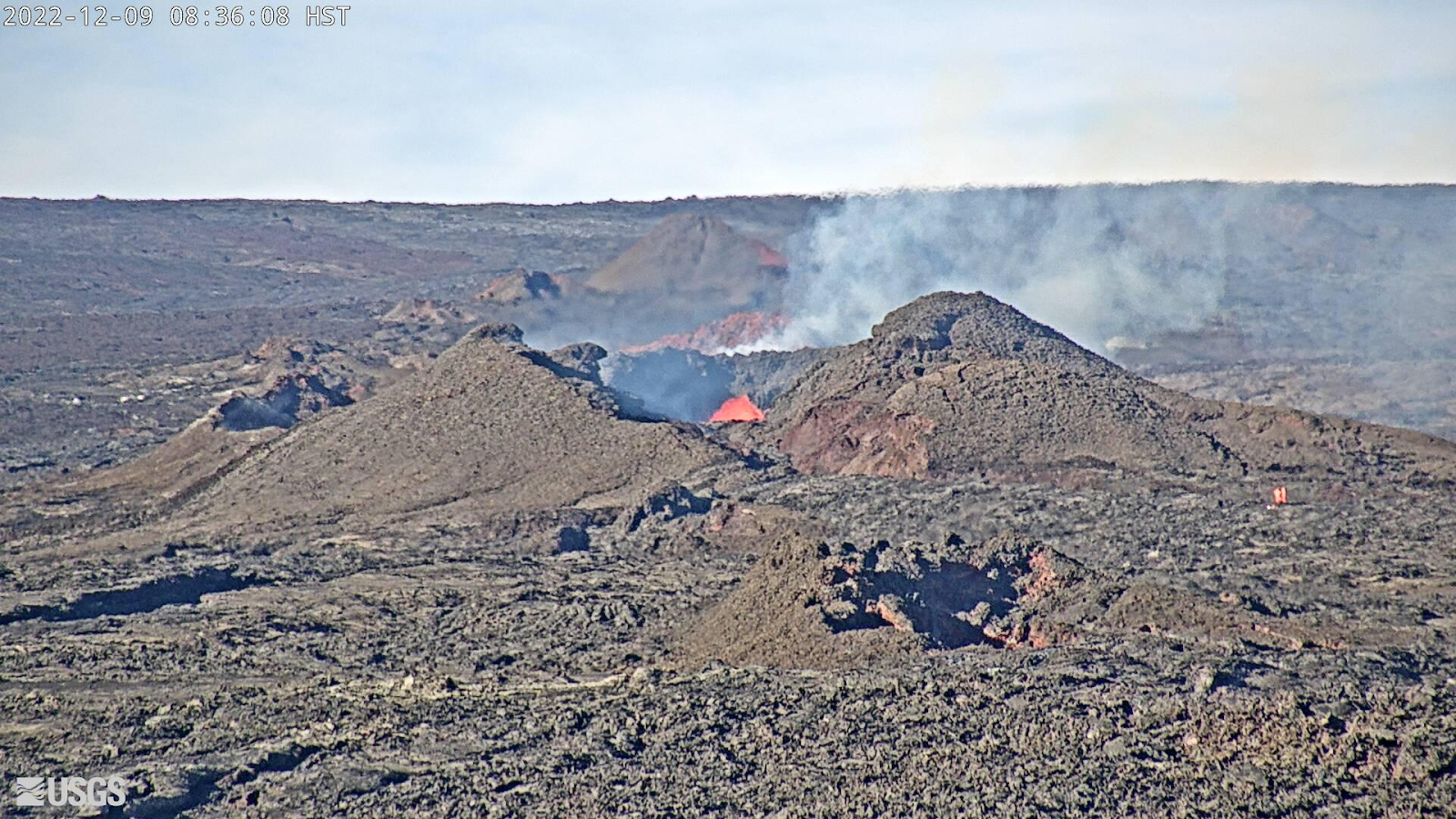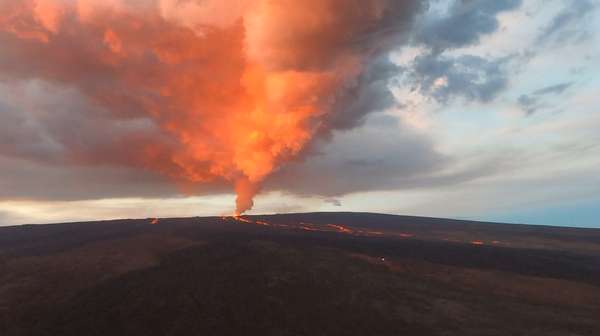Two weeks after their double eruption, Kīlauea and Mauna Loa are handling the holidays differently, although neither is erupting.
Mauna Loa appears to be resting,
according to the U.S. Geological Survey’s Hawaiian Volcano Observatory.
At Mauna Loa, “deformation rates have
decreased significantly, and there is no sign of inflation at this time. The
Hawaiian Volcano Observatory continues to closely monitor the earthquake and
deformation rates at Mauna Loa. We expect additional shallow seismicity and other
signs of unrest to precede any future eruption, if one were to occur,” the
observatory reported.
At Kīlauea, there is more activity. Seismologists’
instruments show that Kīlauea is re-inflating, its upper area expanding as
magma pumps into underground chambers near the surface.
The smaller mountain has been
inflating since November 29—meaning it was inflating at the same time it was
erupting during the early days of the Mauna Loa eruption. A seismic swarm, indicating
magma movement underground, shook the volcano Friday (December 30).
“These earthquakes are typical as the
summit of Kīlauea repressurizes after the end of the last eruption. The earthquakes are generally dispersed
beneath and around the south side of Halemaʻumaʻu,” the HVO reported.
It is normal for Mauna Loa to take a longer
break between eruptions than Kīlauea.
Kīlauea’s
most recent eruption lasted a little more than 14 months from September 29,
2021, to December 9, 2022. It was entirely within the crater at Halema’uma’u.
The volcano erupts frequently, often a couple of times a year, and sometimes continuously
for years.
Mauna
Loa’s recent eruption lasted from November 27, 2022, to December 10, 2022. The
volcano for the past couple of centuries has erupted every five years or so,
but pauses between eruptions can be months to decades long.
© Jan
TenBruggencate 2022








